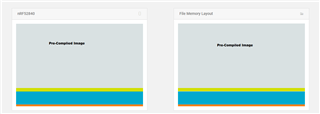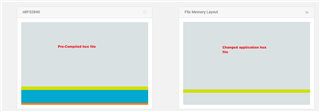I am new to the NRF52840-DK. To burn the program into the kit, I have lots of tries to install nrfGo studio but it gives me the "no board detected readback protection" error. So, I installed nRF Connect v3.0.0 PC tool and add programmer app.
By using this app, I am able to load the program into the board.
Here, my concern is that when I am loading the pre-compiled .hex file given by Nodic, it has included three memory region- MBR or Application, SoftDevice, and Application.
Now, I have made little change in the code and compiled my project which is generated .hex file. When I tried to load this file, it has shown me only the Application region and When I am loading this by doing "Erase and Write" option in the tool it is not working.
There is one option in the tool for only "Write" but it is not enabled.
What should I do here? If we only want to load application image what we do here? Like we have the option in nRFgo studio for selection Application, Boot-loader, and SofDevice.




